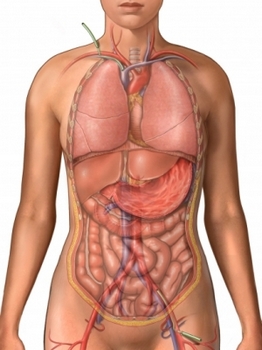Plasmapheresis – Therapeutic plasma exchange
Description plasmapheresis
Plasmapheresis – replacement of blood plasma. Plasma – this is the liquid part of blood, which does not contain cells. After removing the plasma it is replaced with fresh, and treated with or added back into the blood (kryoferez).
Reasons for plasmapheresis
Using plasmapheresis removes autoantibodies from the blood. Autoantibodies – are proteins, that are found in blood plasma. They mistakenly attack the body's own tissues. In some cases, this procedure is used to remove toxins or metabolic products.
Using these disorders are treated plasmapheresis:
- Autoimmune diseases – Disorder, which occur, when the body's immune system attacks its own tissues and organs;
- Neurological diseases, infringement, affecting the nervous system;
- Very high levels of cholesterol in the blood, which can not be reduced through diet and drugs;
- Toxins, which may enter the blood.
Possible complications plasmapheresis
Complications are rare, but the procedure does not guarantee the absence of risk. If you plan to plasmapheresis, you need to know about possible complications, which may include:
- Anaphylactic shock – a dangerous allergic reaction to a substance, used in plasma replacement, which usually starts with itching, breathing difficulties or rashes;
- Mild allergic reaction to the procedure, which can cause fever, chills, rash;
- Infection;
- Bleeding;
- Drop in blood pressure;
- Bruising or swelling.
Plasmapheresis may not be appropriate for patients with certain bleeding disorders.
How is plasmapheresis?
Preparing for plasmapheresis
In the run-up procedure:
- We need to tell the doctor about the medications taken. Maybe, some of them should stop taking before the procedure;
- We need to organize a trip home from the hospital;
- Drink plenty of fluids and beverages, do not contain alcohol and caffeine;
On the day of plasmapheresis:
- You can eat a balanced diet, unless otherwise noted physician;
- Wear comfortable clothing with sleeves, that can easily be rolled up above the elbow;
- Bring a book or player, to pass the time during the procedure;
- Before the procedure to empty the bladder.
Anesthesia
In carrying out plasmapheresis anesthesia is used.
Procedure plasmapheresis
Plasma exchange is carried out using the apparatus of apheresis, which can operate in one of two ways. The first sprosobe blood cells may be separated from the plasma during the rotation at high speeds in a special centrifuge. The second method uses a special membrane. The membrane has tiny pores, through which can pass only the plasma, blood cells thus filtered.

You will need to lie in bed or sit in a reclining chair. Two needles are attached to the tube and catheter are inserted into a vein. In some cases, each arm is inserted on one needle. In another case, a needle can be inserted in the arm, and the other in the leg. If the veins in the limbs are too small, to use them for the procedure, into a vein at the shoulder or groin area is a special catheter is inserted.
Blood is withdrawn from the body through one of the catheter and is directed to an apparatus for apheresis. Once there, red blood cells are separated from plasma. The blood cells will be mixed with new plasma or plasma substitutes. The blood is then returned to the body through the other tube.
Immediately after the procedure, plasmapheresis
You will need to rest for a period of time.
How long will plasmapheresis?
- Depending on the method of, plasmapheresis may take 1 to 3 hours;
- The duration of treatment depends on the body size and the amount of plasma, which is to be replaced;
- Often, multiple sessions need plasmapheresis a week for two weeks or more;
- The frequency of treatments depends on the diagnosis.
Plasmapheresis – Will it hurt?
You may experience pain, when administered needle. The procedure itself is painless.
The average time of stay in the hospital after plasmapheresis
You can leave the hospital the day of the procedure, After a short rest.
In some cases, hospitalization is required. Length of stay will depend on the diagnosis.
Care after plasmapheresis
After returning home, follow these steps:, to ensure the normal recovery:
- Avoid hot foods or beverages, at least two or three hours after the procedure. They dilate blood vessels and may cause dizziness;
- Avoid the sun and heat of the day of the plasmapheresis;
- On the day of the procedure, avoid taking a hot shower and sauna;
- To reduce the risk of bleeding, it is not recommended to shave or cut your nails at least 4-6 hours after treatment;
- Usually, daily activities can be vernutsyav day of the plasmapheresis;
- Be sure to follow your doctor's instructions.
Improvement can occur within days or weeks, depending on the condition of the patient. Over time, autoantibodies may reappear. Concerning, plasmapheresis is mainly used as a temporary treatment.
Contact your doctor after plasmapheresis
Following plasmapheresis should see a doctor, If the following symptoms:
- Excessive bruising, bleeding, or swelling at the injection needle;
- Signs of infection, including fever and chills;
- Convulsions;
- Excessive itching or rash;
- Nausea and / or vomiting;
- Pain, which does not pass after taking pain medication appointed;
- Cough, breathlessness, shortness of breath or chest pain;
- Irregular heartbeat;
- Abdominal pain;
- Joint pain, fatigue, constraint, or other painful symptoms;
- The yellowish tinge to the skin or eyes.
